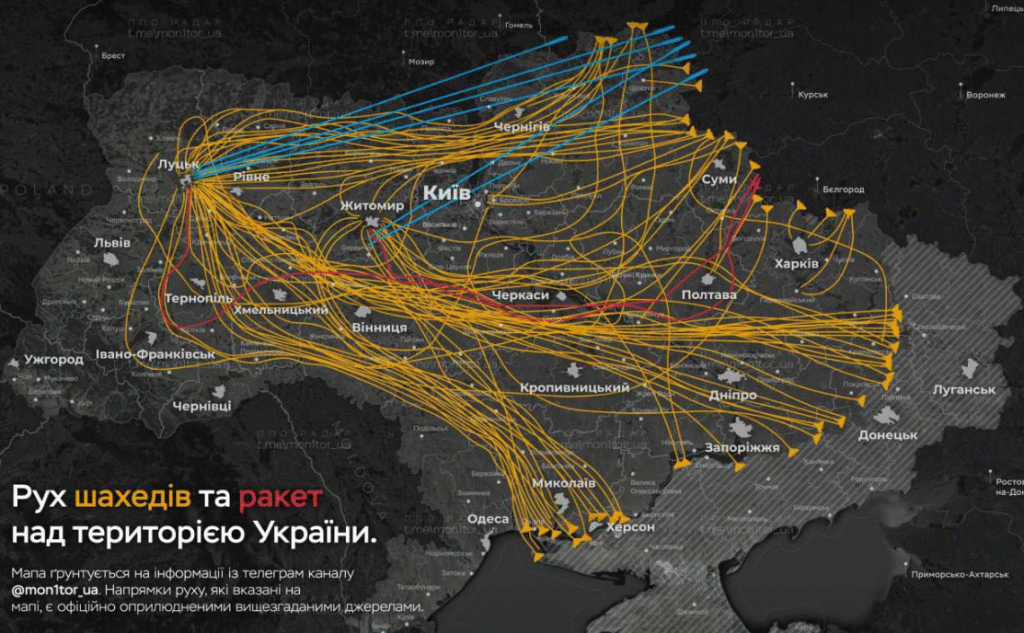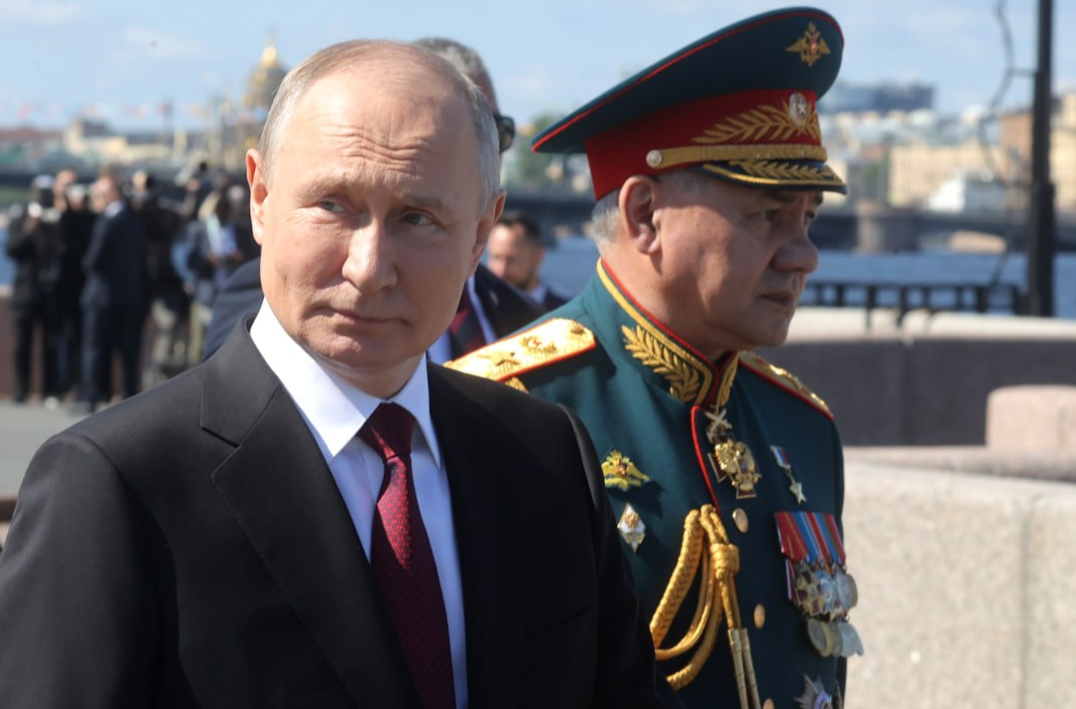Russia unleashes its largest aerial assault of the war on Ukraine, deploying 728 drones and 13 missiles. Lutsk and Zhytomyr hardest hit as Ukraine shoots down or jams most targets. Calls for stronger oil sanctions on Moscow intensify.
Ukraine Endures Record-Breaking Russian Drone and Missile Attack
In a harrowing escalation of the ongoing war, Russia has launched the largest aerial assault on Ukraine since the full-scale invasion began. According to Ukraine’s Air Force and monitoring channels, a staggering total of 741 aerial targets were deployed overnight, including 728 drones and 13 missiles.
Among these were over 300 Iranian-made Shahed drones and high-speed Kinzhal and Iskander missiles. The attack was not only unprecedented in scale but also spanned nearly every region of the country, causing widespread damage and disruption.
President Volodymyr Zelensky confirmed the attack in a public statement, describing it as a “telling” and deeply symbolic strike. “It was the highest number of aerial targets in a single day,” Zelensky stated, praising Ukraine’s air defense units and mobile fire groups for their quick response and effectiveness. The President also emphasized the ongoing efforts to scale up the deployment of Ukrainian interceptor drones, which played a crucial role in neutralizing dozens of enemy targets.
Ukraine’s Air Force reported that 296 drones were shot down by anti-aircraft and mobile fire teams, while another 415 were disabled through electronic warfare systems, reflecting the growing effectiveness of Ukraine’s evolving air defense network.
Main Targets: Lutsk and Zhytomyr
Among the hardest hit cities was Lutsk, which experienced the most massive aerial attack since the beginning of Russia’s full-scale invasion. The city suffered extensive damage, with thick black smoke rising above multiple areas and fires breaking out across the region. Zelensky confirmed that Lutsk was the primary focus of the air raid, with Zhytomyr also suffering significant missile strikes.
The Russian Federation reportedly used between 540 and 620 UAVs (Unmanned Aerial Vehicles), in addition to approximately 10 missiles of various types, to conduct the strike. Explosions and air raid sirens were heard across multiple regions throughout the night and early morning.
Nationwide Assault
The Russian onslaught was not limited to just a few areas. According to President Zelensky, the attack affected multiple regions including:
- Dnipro
- Zhytomyr
- Kyiv
- Kirovohrad
- Mykolaiv
- Sumy
- Kharkiv
- Khmelnytskyi
- Cherkasy
- Chernihiv
In Kyiv, a loud explosion was heard, though it was later clarified to be a sonic boom caused by a Kinzhal missile, flying at speeds of up to 12,000 km/h, rather than an actual impact.

Russia’s massive drone deployment included over 100 Shahed drones, also known by their Russian designation Geran-2, reportedly launched with the intention of targeting sleeping civilians. These were accompanied by Kinzhal missile launches conducted by MiG-31 aircraft, expanding the reach and intensity of the attack.
The Strategic Message Behind the Strike
The timing and scale of this record-breaking aerial assault are widely seen as a defiant message from Moscow. The attack came just as diplomatic efforts were ramping up to secure a ceasefire and push for peace. President Zelensky was quick to point this out in his remarks, highlighting Russia’s continued resistance to peace negotiations and its preference for escalating violence.
“This is yet another proof of the need for sanctions,” Zelensky said, reiterating his call for stronger economic pressure, especially on Russian oil exports. He advocated for biting sanctions on oil, which he argues has been the financial backbone of Moscow’s war machine for over three years. Additionally, the Ukrainian President called for secondary sanctions on countries and entities that continue to purchase Russian oil, indirectly supporting the aggression.
The Need for Global Action
As Ukraine continues to face unrelenting attacks, the message from Kyiv is clear—international partners must act swiftly and decisively. President Zelensky’s call to action is not just a plea for military support but a demand for a united economic front to cut off the resources that fund Russia’s war effort. The sheer scale of the recent attack underscores the urgency of the situation and the need for the global community to take a firmer stance against aggression.
With drone warfare and missile technology now at the center of modern conflict, Ukraine’s ability to intercept and jam hundreds of aerial threats is a testament to its resilience. However, continued support and stronger deterrents—both military and economic—are essential if lasting peace is to be achieved.

